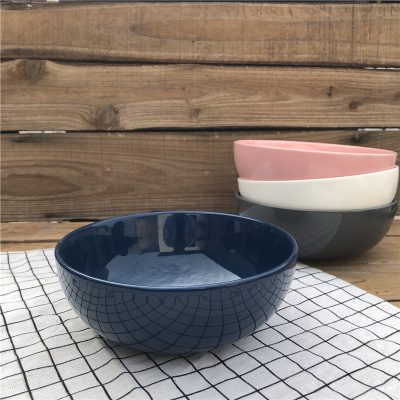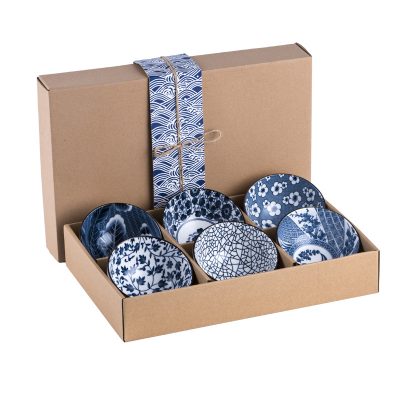Ceramic dining utensils are the most common, and are favored by consumers for their many advantages, such as easy cleaning, acid and alkali resistance, convenient high-temperature disinfection, and steaming, boiling, roasting, and roasting food. High-grade ceramic utensils with beautiful appearance and beautiful decoration are not only practical, but also artistic and ornamental, and are necessities of daily life.
1. Ceramic classification
(1) Classification by type of porcelain: At present, there are mainly daily-use porcelain, bone ashes porcelain, exquisite daily-use porcelain, underglaze (middle) color daily-use porcelain, daily-use fine pottery, ordinary ceramic cooking utensils and fine ceramic cooking utensils. device, etc. Daily-use ceramics (bone china has only one grade) are divided into multiple grades such as superior products, first-class products, and qualified products according to the number or extent of appearance defects.
(2) Classification according to the decoration method of the flower surface: According to the characteristics of the flower surface, it can be divided into on-glaze color, in-glaze color, under-glaze color and color-glazed porcelain and some uncolored white porcelain.
On-glaze ceramics are products made of on-glaze ceramic pigments that are pasted on the glaze or directly painted with pigments on the surface of the product, and then baked at 700-850°C. Because the baking temperature did not reach the melting temperature of the glaze layer and the non-glaze ceramic pigment was used, the flower surface could not sink into the glaze, but could only stick to the surface of the glaze layer. If you touch the surface of the product with your hand, there is a protruding feeling at the decoration, and you can observe the unevenness with the naked eye.
The firing temperature of in-glaze color ceramics is higher than that of on-glaze color, reaching the melting temperature of the product glaze. The ceramic pigment sinks into the glaze when the glaze is melted, and is covered by the glaze layer after cooling. The surface of the product is as smooth as glass when touched by hand, and there is basically no unevenness.
Underglaze ceramics is a traditional decoration method in my country. All the decorations of the products are carried out on the porcelain blanks. After glazing, they are fired at a high temperature. This product is the same as the underglaze color. The flower surface is covered by the glaze layer and the surface is bright. , flat, the surface of the product is smooth when you touch it by hand, and sometimes there is a concave feeling in the decoration.
For color-glazed porcelain, a high-temperature colorant is added to the ceramic glaze, so that the glazed surface of the fired product exhibits a certain color, such as yellow, blue, bean cyan, etc.
White porcelain usually refers to ceramics without any color decoration.






















